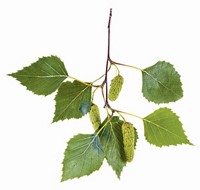Advertisement
Grab your lab coat. Let's get started
Welcome!
Welcome!
Create an account below to get 6 C&EN articles per month, receive newsletters and more - all free.
It seems this is your first time logging in online. Please enter the following information to continue.
As an ACS member you automatically get access to this site. All we need is few more details to create your reading experience.
Not you? Sign in with a different account.
Not you? Sign in with a different account.
ERROR 1
ERROR 1
ERROR 2
ERROR 2
ERROR 2
ERROR 2
ERROR 2
Password and Confirm password must match.
If you have an ACS member number, please enter it here so we can link this account to your membership. (optional)
ERROR 2
ACS values your privacy. By submitting your information, you are gaining access to C&EN and subscribing to our weekly newsletter. We use the information you provide to make your reading experience better, and we will never sell your data to third party members.
Environment
Activated Carbon Sops Up PCBs
Pollution Cleanup: Researchers develop a cheaper, easier alternative to dredging sites contaminated with polychlorinated biphenyls
by Sarah Webb
November 17, 2011

To clean up rivers and lakes contaminated with persistent pollutants such as polychlorinated biphenyls (PCBs) crews often must dig up the contaminated sediments and moving them to another location. New research suggests a cheaper, easier alternative. In a pilot study, researchers have demonstrated that adding activated carbon to river sediments significantly reduced PCB concentrations in the water and in worms that live in the sediments (Environ. Sci. Technol. DOI: 10.1021/es202218p).
PCBs cause skin, liver, and immune problems in people and animals. The risk posed by persistent pollutants in rivers and lakes isn’t determined solely by their amount. What also matters, says Upal Ghosh of the University of Maryland, Baltimore County, is how tightly the chemicals can bind to the sediments. If the contaminants can move freely between the sediments and the water, they’re more likely to be eaten by organisms at the base of the food web, such as worms, and, as a result, to accumulate in fish and humans.
Ghosh and his colleagues had previously studied industrial areas contaminated with both PCBs and black carbon. They found that those sites had lower levels of PCBs in organisms or in the water than did areas without black carbon deposits. Black carbon might be serving as a kind of flypaper to trap these chemicals, they reasoned. Since activated carbon has a higher surface area, it might do an even better job of keeping these greasy chemicals out of the food chain, they thought.
Ghosh and graduate student Barbara Beckingham set up a pilot study in 2006 in a section of the lower Grasse River in upstate New York that had been contaminated with PCBs from a nearby aluminum plant. The plant is owned by Alcoa, which helped fund the study. The researchers spread, tilled, and injected particles of activated carbon into the sediments over a 0.5-acre area.
For three years, they followed the water concentration of PCBs and the PCB uptake by worms that lived in the treated sediments. They then compared those observations to data collected in nearby untreated sediments. The black carbon reduced the amount of PCBs in the tissue of worms by at least 70% and the concentrations in the water by at least 93%.
Using activated carbon “makes a whole lot of sense” economically and practically, says Sally Brown of the University of Washington, Seattle, who was not involved in the research. The concentrations of activated carbon used in this study are relatively high, she says, at 3 to 5% of the sediment by weight. With optimization, the researchers might reduce the amounts needed to remediate polluted sites, she says.
Ghosh and his colleagues are now looking at better large-scale methods for distributing activated carbon. They also want to study how a site’s sediment and water flow conditions affect the success of remediation with activated carbon.





Join the conversation
Contact the reporter
Submit a Letter to the Editor for publication
Engage with us on Twitter